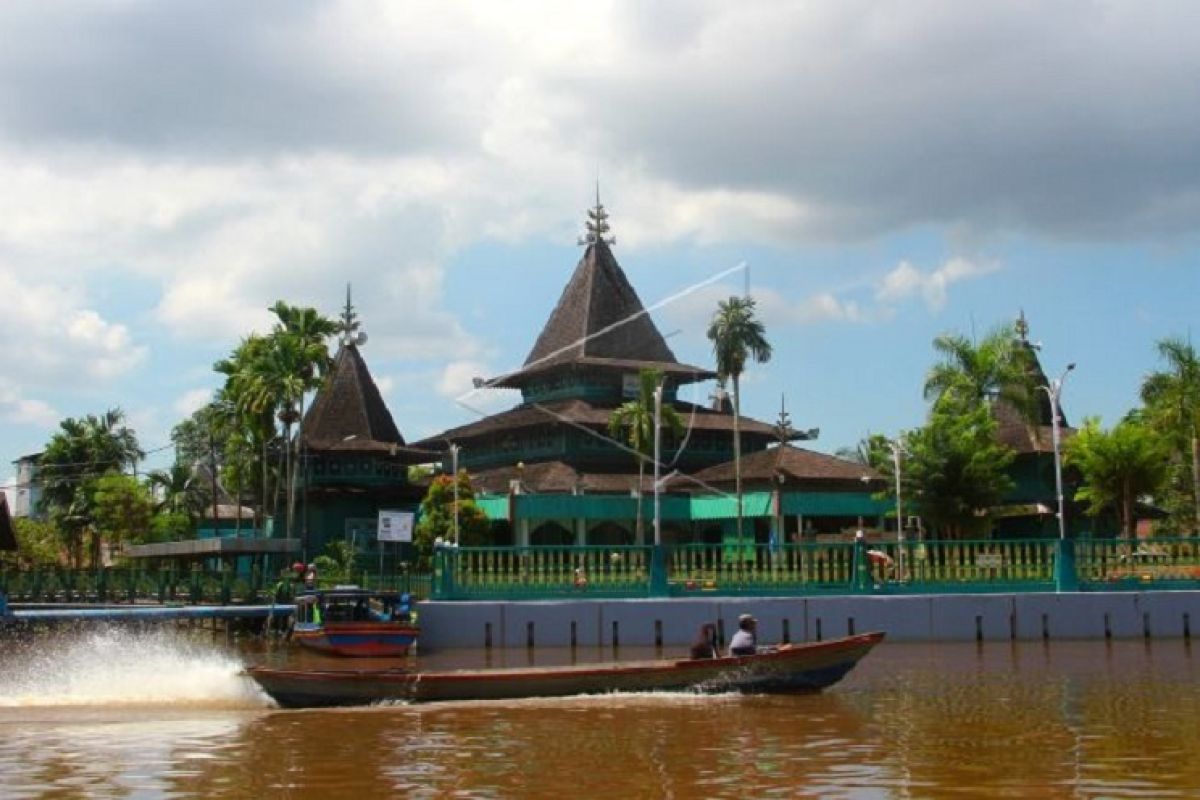He then led the Banjar Sultanate, the first sultanate in Kalimantan that marked the end of the Hinduism kingdom in the island in the early 16th century.
The conversion was a precondition given by Java's Demak Sultanate when Sultan Suriansyah sought help in the battle against Prince Tumenggung.
After Sultan Suriansyah -- or earlier known as Prince Samudera -- and all his followers embraced Islam, the king built a mosque in 1526, according to the Cultural Heritage Agency of the Education and Cultural Ministry in its official website.
After 496 years, the Sultan Suriansyah Mosque is still standing strong to share memories with people about the history of Banjarmasin, the capital city of South Kalimantan, that begun with the founding of the Banjar Sultanate.
The date when the king embraced Islam on September 24, 1526, was declared as the anniversary of the city.
The oldest mosque in South Kalimantan, built on a 750 square meter plot of land, is situated at the Kuin River bank in Banjarmasin. Most parts of the mosque are made of ironwood, including its floor, roof, doors, main pillars, and the pulpit.
As it was designated as a cultural heritage in 1978, the mosque structure is kept as it is, despite minor renovations to fix some damages due to ageing. The latest renovation was conducted in 2000.
An official of the Sultan Suriansyah mosque and tomb complex management, Zulkarnain, noted that the mosque is still operated as a regular place of worship and can accommodate up to 500 people for Friday prayers.
There is also an Islamic pre-school.
“Sometimes, people from different provinces came and stayed here for few days for religious study,” he remarked.
The mosque has reflected the Banjarese traditional architecture, with three-layered top covered by ironwood shingle roof, a typical pre-Islamic roof style.
Zulkarnain, who claimed to be one of the royal lineage, said Sultan Suriansyah had ordered his people to get four ironwood logs in the forest to be used as the so-called soko guru, main pillars of the mosque.
"Those are some of the original parts of the mosque," Zulkarnain remarked while pointing at the four pillars.
Other original parts, aged almost 500 years, are a stone mat to dry wet feet before entering the mosque and a wooden sundial, both currently only displayed at the front yard of the mosque.
There are also a nine-stair pulpit of the mosque and the great doors in front of the pulpit, he remarked.
The pulpit was made of ironwood, with floral carving on each step.
"Khatib Dayan used to stand at this pulpit to give his sermon," Zulkarnain stated. Khatib Dayan or Syekh Maulana Syarif Hidayatullah was the first “guru” for the king and his people to learn about Islam.
He was sent by Sunan Gunung Jati, one of the Wali Sanga, or the nine saints of Islam, who played an important role in the spread of Islam in Indonesia.
The king's tomb
A caretaker of the Sultan Suriansyah tomb complex, Midi, using a small craft of coconut leaf, gently splashed fresh water over the head, shoulders, and palms of visitors that left a scent of roses.
It was a welcoming ritual for visitors of the king’s tomb, located some 500 meters from the Sultan Suriansyah Mosque.
He did the ritual only for those who want to or those who asked him to lead the prayer near Sultan Suriansyah’s tomb.
The tomb was never really quiet, as people visited the complex even in the middle of the night.
According to Midi, the tomb, on a daily basis, receives at least 100 visitors from different parts of the country, with the highest number recorded during the death anniversary of a widely respected ulema, Guru Sekumpul.
The tomb complex was, in fact, the ex-king’s palace site before it was moved to Martapura, some 40 kilometers east of Banjarmasin.
However, visitors can only see red bricks as the ex-boundary and base of the palace. The king, who loved red color, told his people to build a red-brick palace for him and that he wanted to be buried in the palace when he died.
Not only Sultan Suriansyah but also some of his close relatives, including his mother, his two successors, Khatib Dayan, and his warlords -- Patih Kuin and Patih Masih -- were buried in the complex.
Zulkarnain said, the city of Banjarmasin was named after Patih Masih. "It was first known as Bandar Masih, as the port and the surrounding villages were under the ruling of Patih Masih."
Related news: Traditional kings, sultans must have say in development: DPD Speaker
Related news: Pontianak Sultanate confers royal title on Prabowo Subianto
Editor: Rahmad Nasution
Copyright © ANTARA 2022











